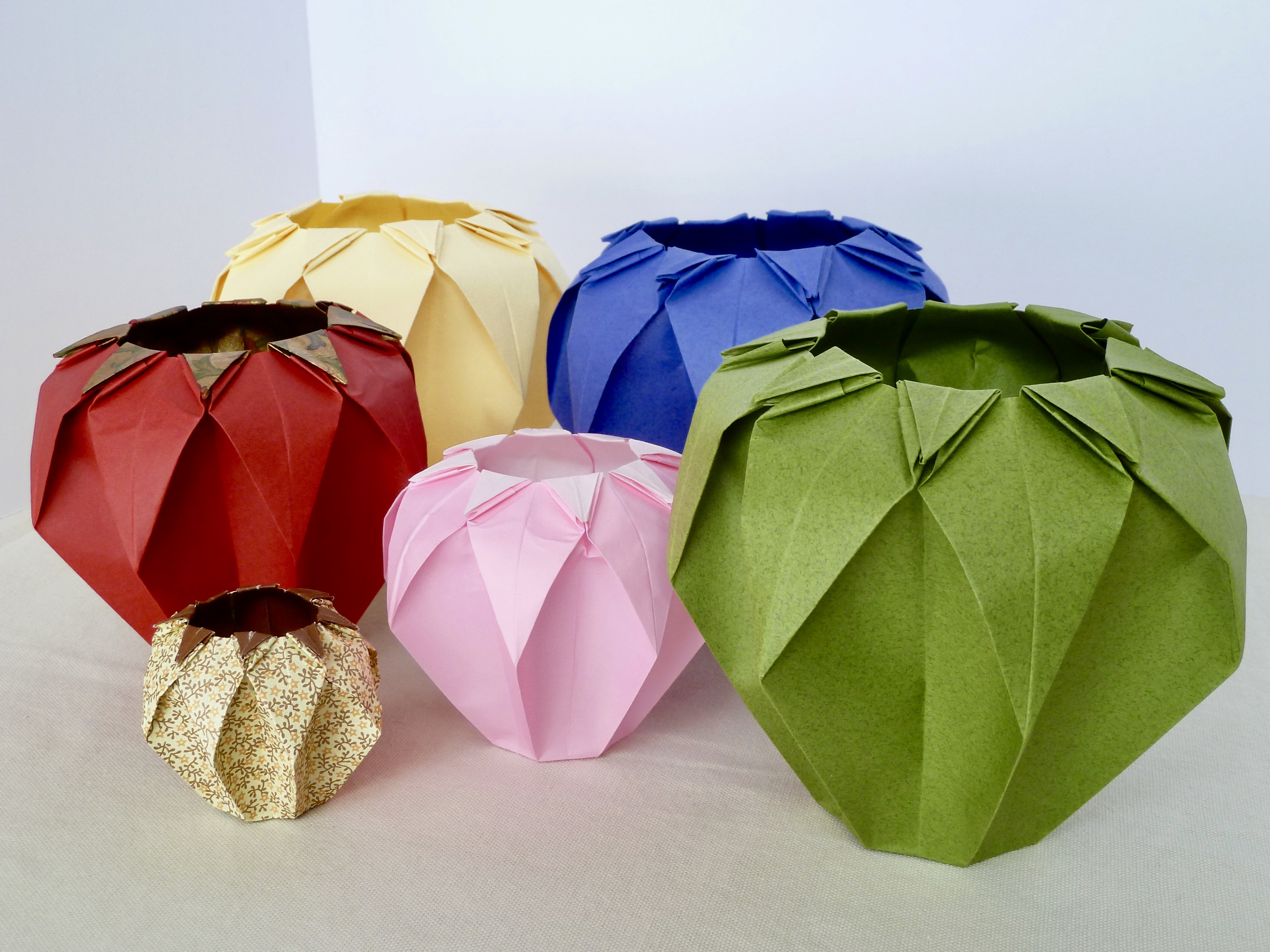


Over Christmas Break I invented this tessellation when I was playing around with inflating certain parts of the paper. I found that I could raise pairs of triangles and that they looked very pretty when arranged in groups of four. I made nine zinnias and fashioned the edges of the paper so they looked like leaves. I especially enjoyed making the leaves on the corners pointy, which gave more dimension to the model and caught the light in an angular, eye-catching way. The back of the tessellation is intriguing too: there are nine hollow cubes with dividers, broken it into four regions. As I was folding the triangles, I did not realize that I was creating this interesting pattern on the back, so when I flipped the paper over I had the pleasant surprise of inventing something involuntarily.
I submitted this model to the OrigaMIT Competition, but unfortunately the competition was cancelled because of COVID-19. I am hoping to teach this model at the OrigamiUSA Convention which was meant to take place in June, but it too has been disrupted by the pandemic and has been postponed. As we go through these difficult circumstances I hope that origami can bring peace of mind to a struggling world.
Folded and designed by Sophie Usherwood

























































